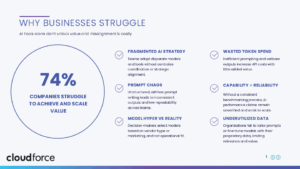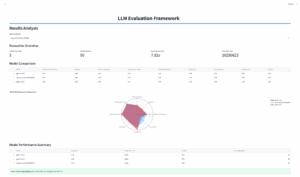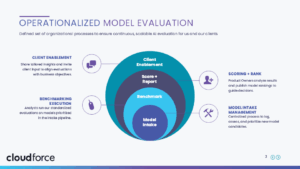
Looking Back at 2025: A Year of Metamorphosis
When I sat down to think about all the things I could write about to sum up the year, it immediately felt overwhelming. So much has changed about our organization; the customers we serve, the product...

Choosing the Right AI Models Is Hard. Here’s How to Get It Right.
Large Language Models (LLMs) are evolving fast and for enterprise leaders, the pressure to pick the right ones has never been higher. As more vendors and architectures flood the market, what used to be a simple API call is now a strategic decision with real implications for cost, capability, and customer experience.
At Cloudforce, we’ve spent time building a defensible, repeatable framework to help our clients navigate this complexity. Because the reality is: most companies are struggling to achieve value from generative AI.
Why Most AI Initiatives Stall Out

A recent industry benchmark found 74% of companies struggle to achieve and scale value from their AI investments. And it’s not due to a lack of tools.
The real reasons are more systemic:
The Real Problem?
These aren’t technology problems. They’re alignment, evaluation, and implementation problems. That’s where Cloudforce comes in.
Our Approach: A Repeatable Framework for Model Selection
At Cloudforce, we apply a structured evaluation process to ensure models fit real use cases and scale over time. Our framework includes four key stages:
We continuously track new model releases from leading providers like OpenAI, Anthropic, Meta, and Mistral, building a prioritized inventory aligned to client demand.
Using standardized, version-controlled prompts, we rigorously test models across multiple dimensions in an automated and repeatable process.
We normalize and score model performance in a normalized leaderboard format, enabling better business decisions.
Our team delivers quarterly briefings that include configuration tips, top-performers, and strategic guidance, keeping your AI stack current and aligned.
What We Measure: The 8 Dimensions of Effective AI

Every model we evaluate is tested across a standardized set of eight criteria:
By comparing models across these dimensions, we ensure tradeoffs are known and intentional.
Why Clients Trust Cloudforce

We designed our framework to be:
At Cloudforce, we’re helping organizations of all sizes make better AI decisions with confidence, speed, and clarity. Making sure your AI works as your organization needs it to.
Ready to learn how to bring a defensible AI evaluation framework to your organization?
Get in touch with us here or reach out directly via LinkedIn, we’re here to help.

When I sat down to think about all the things I could write about to sum up the year, it immediately felt overwhelming. So much has changed about our organization; the customers we serve, the product...

As a consultancy positioning ourselves as the human touch behind tech, it should come as no surprise that our criteria for success aren’t solely demonstrated by profit margins. Just as...

Cloudforce has expanded nebulaONE® operations globally, now serving institutions and companies across the Americas, United Kingdom, Europe, Australia, New Zealand, and beyond. What began as...